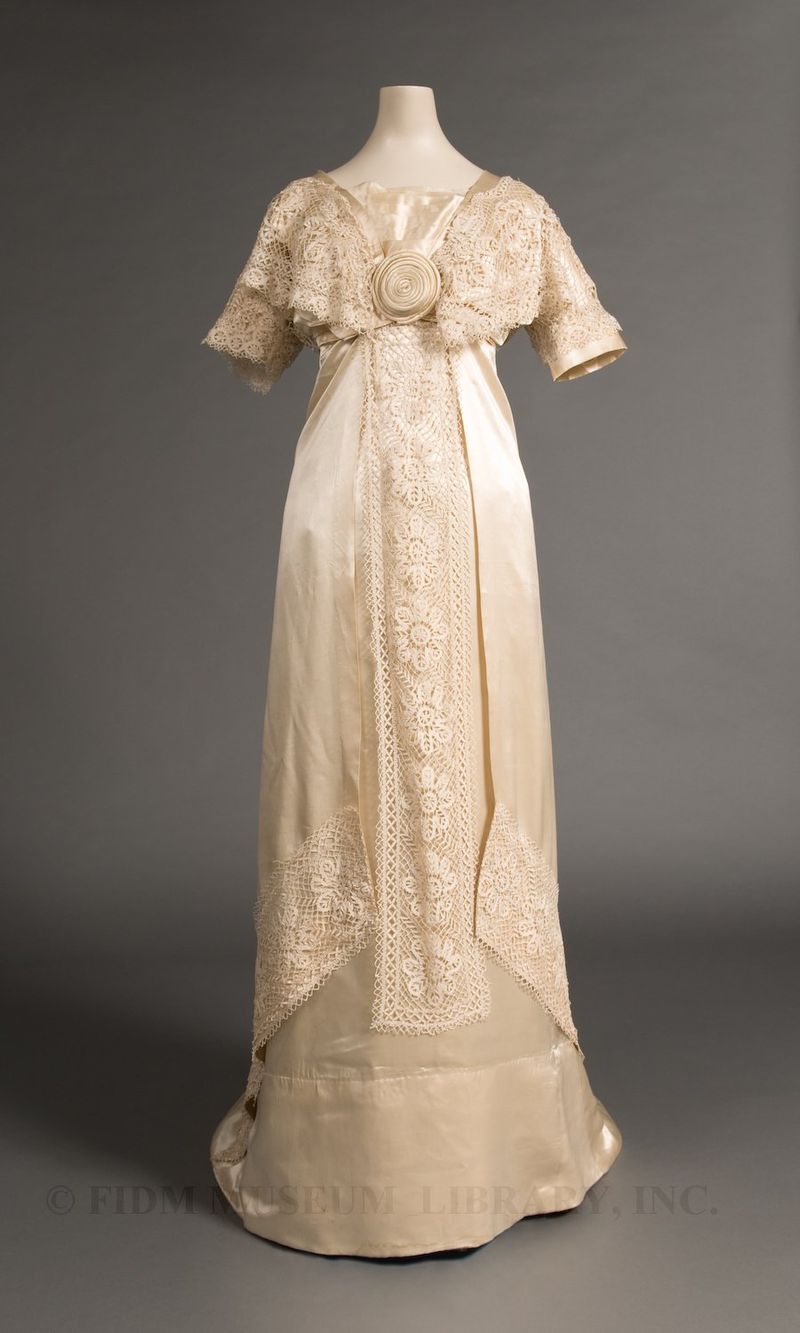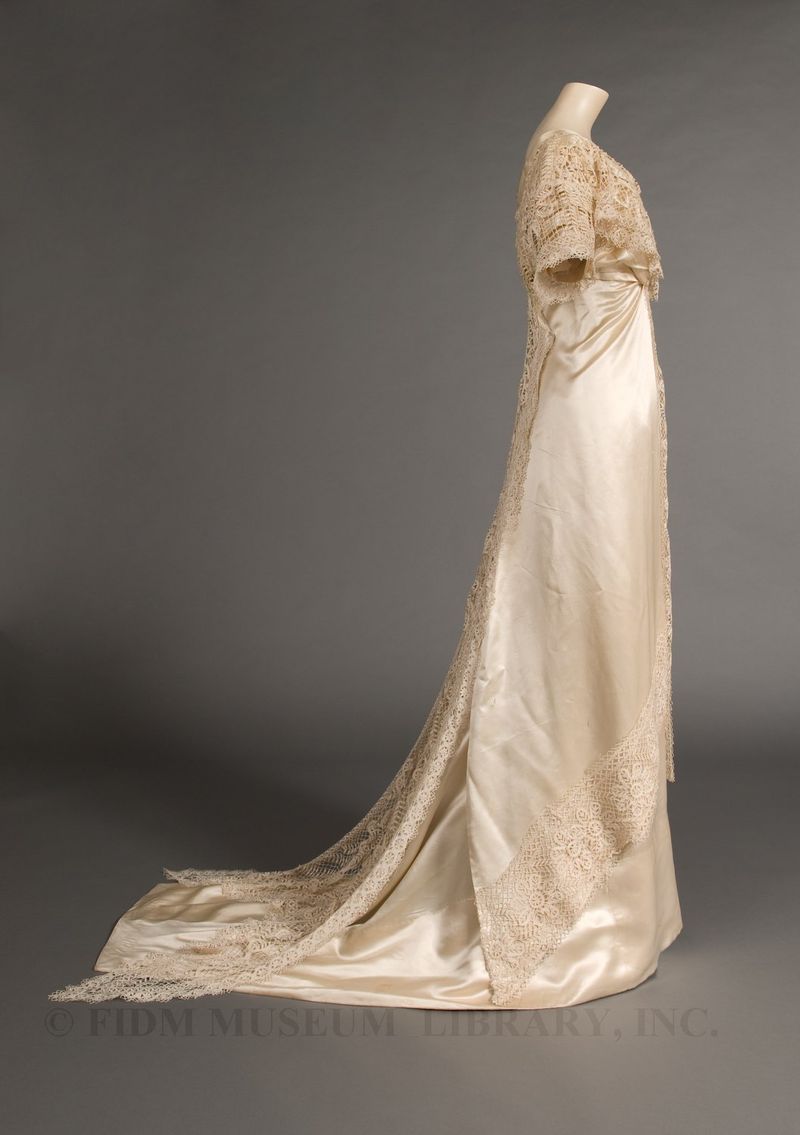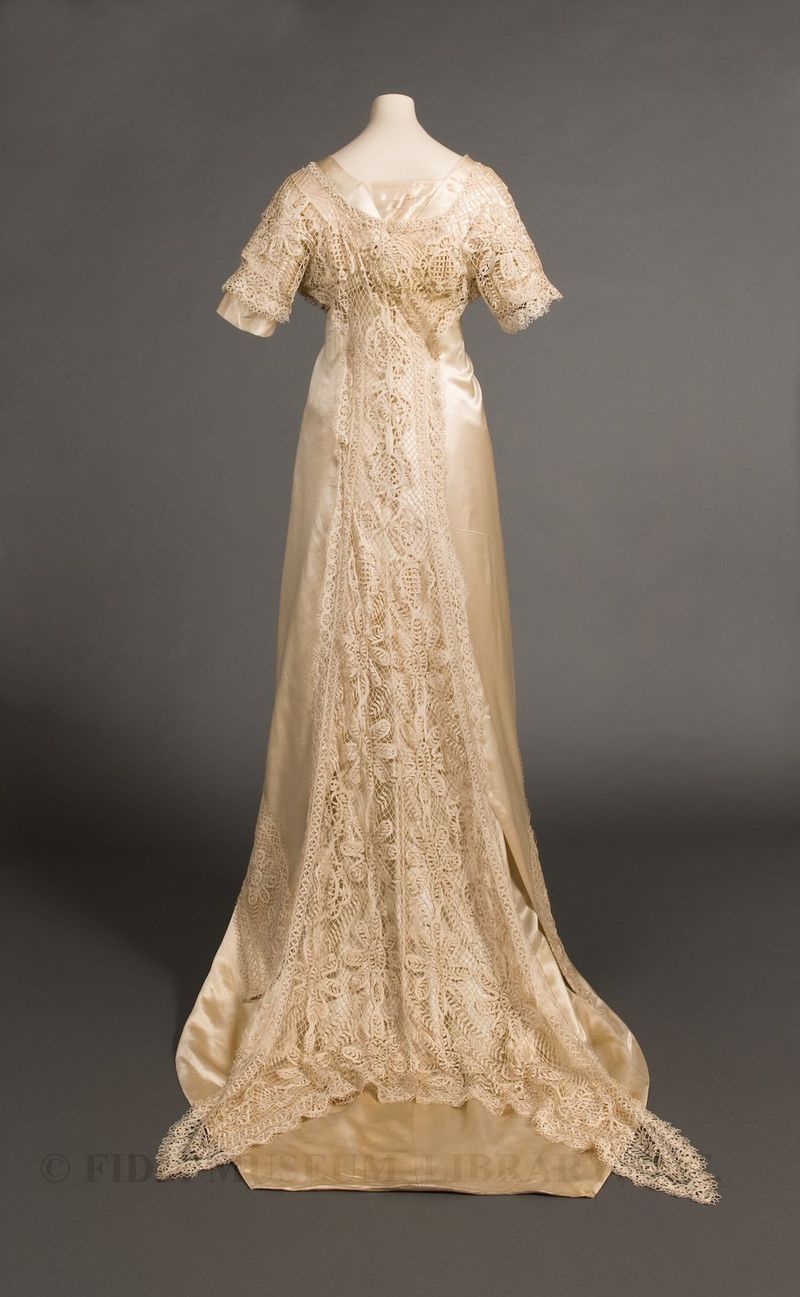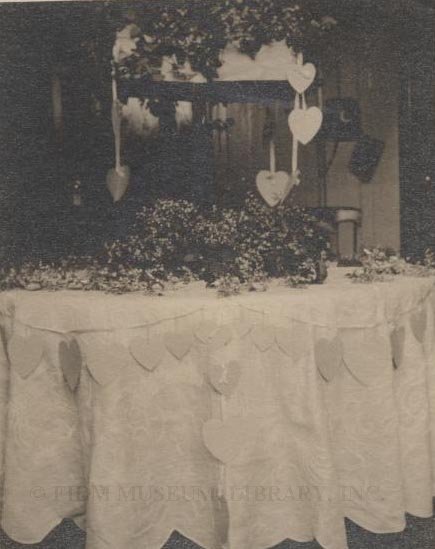Wedding gown, 1910-1911
One of the priciest clothing purchases a woman can make, a wedding gown is worn only once. After the wedding, the gown is carefully tucked away, becoming an heirloom for future generations. In some families, a wedding gown is later altered and worn by a daughter or close relative of the bride. Other wedding gowns make their way into museum collections after generations of careful storage by descendants of the original wearer. Because of their sentimental value, wedding gowns are often in excellent condition when they enter museum collections. This ivory silk gown was worn by bride Mary Wells née Peterson at her wedding. According to records accompanying the donation, Mary's wedding took place in November of 1910 or 1911 in Manila, Philippines.
 Wedding gown worn by Mary Peterson Wells
Wedding gown worn by Mary Peterson Wells
1910 or 1911
Gift of Kathy Kobayashi
2003.799.1A-G
Wedding dresses usually follow the lines of contemporary fashionable dress. This wedding gown, with its high waist and slim silhouette, highlights the popularity of silhouettes inspired by ancient Greek and Roman dress. As described in a post featuring a c. 1912 tunic dress, this style emerged about 1908 and was a dramatic departure from the S-bend silhouette. Mary wore this wedding dress with a headpiece of wax orange blossoms and buds. Sweet-smelling orange blossoms have long been worn by brides, but their popularity was cemented in 1840, when Queen Victoria wore a crown of orange blossoms for her wedding. For those without access to fresh orange blossoms, wax blossoms were a popular alternative. In this photograph, Mary is pictured wearing her wedding gown, the orange blossom headpiece, an extended veil and long gloves.
Mary Peterson Wells in her wedding gown. The writing was already on the photo when it was donated to the FIDM Museum.
Though we know that this gown was worn for a wedding in the Philippines, we don't know where it was made. If made in the Philippines, its up-to-date style is testament to the rapid spread of fashion information to regions far from Paris, the center of high fashion. Alternately, the bride might have commissioned the gown in the United States before setting sail for Manila. Answering this question will take more time, as we haven't completed our research on Mary Peterson Wells. We know that she was born in 1887, but not the location of her birth. Based on what we've discovered so far, she was probably related to James Jackson Peterson. Born in West Virginia in 1853, Peterson was appointed United States consul for Honduras in 1890. By the early 20th century, Peterson had moved to Manila where he received an appointment as official translator and sheriff for the City of Manila. The relationship between James Jackson Peterson and Mary Peterson Wells is still unclear.
The lace panels decorating the gown might have been a family heirloom, given to Mary for use on her wedding dress.
This photograph adds a truly personal touch to the story of Mary Peterson Wells' wedding day. Labelled, "Announcement Table," this image showcases a festive table that must have had special significance for Mary. Decorated with flowers and paper hearts, it probably held a guest book. Did Mary decorate the table herself, cutting out the paper hearts in anticipation of her wedding?


